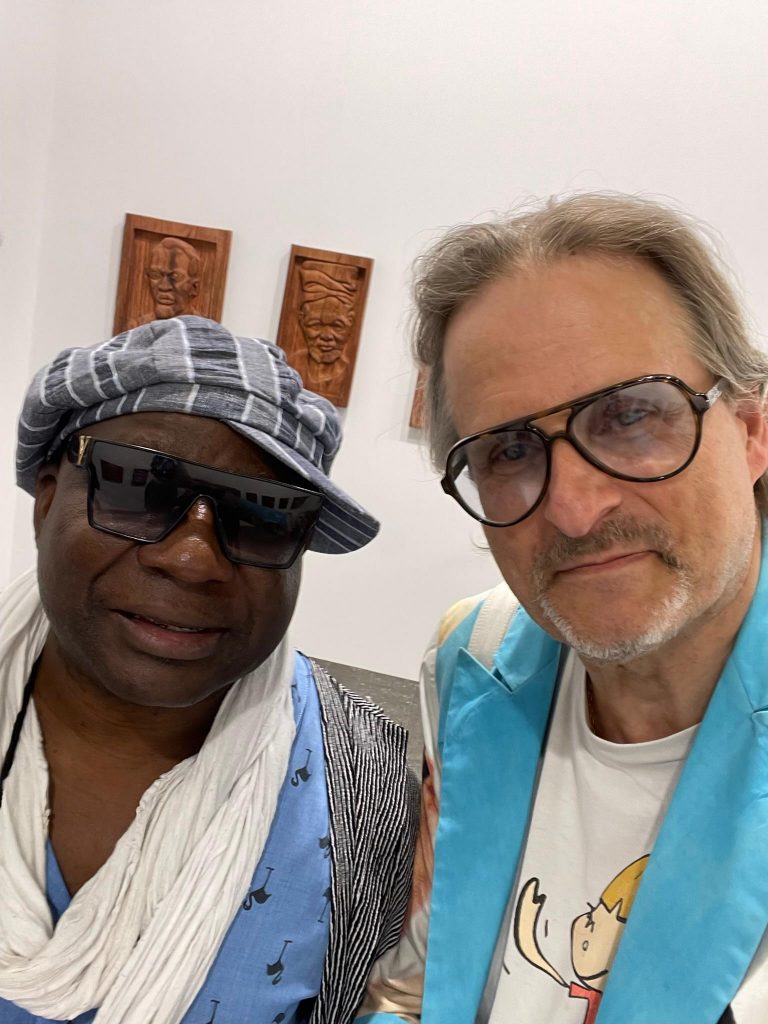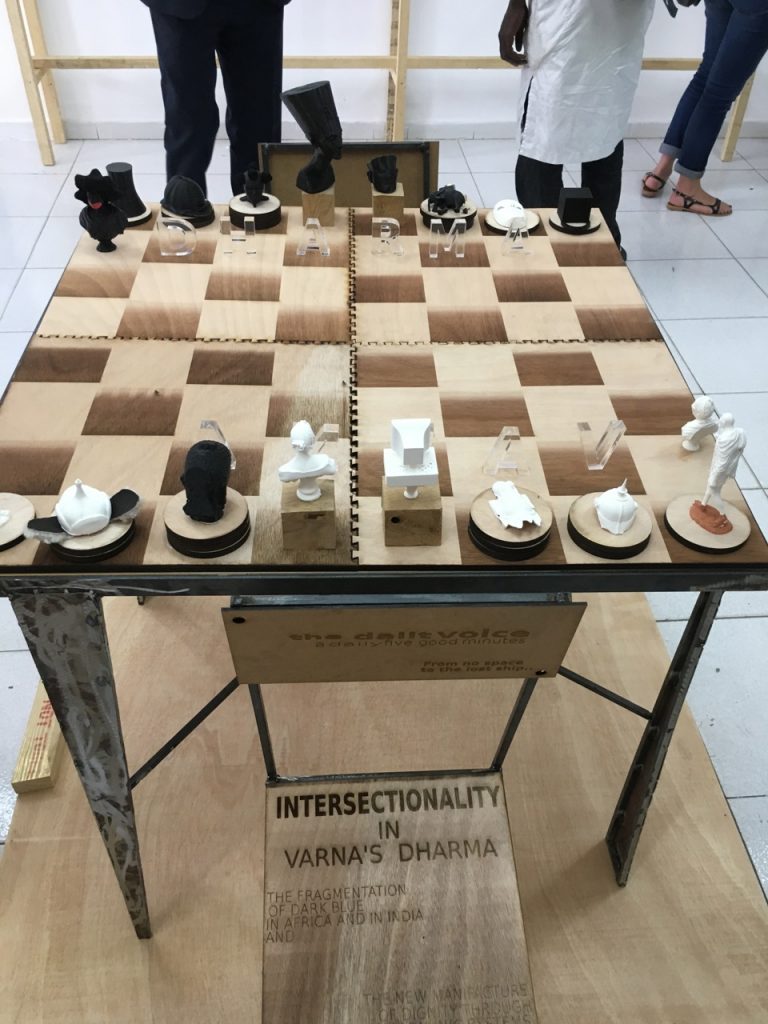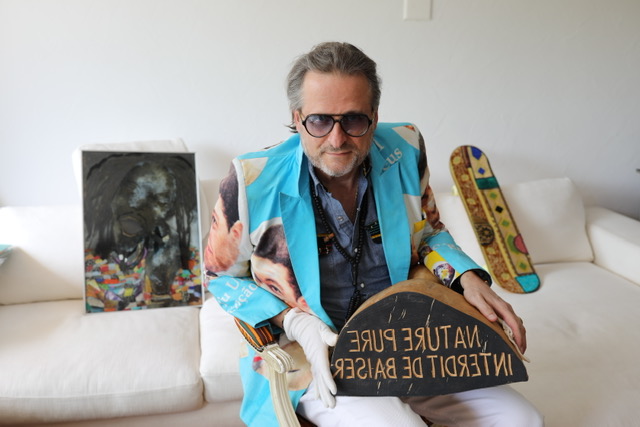David Brolliet about contemporary African art:
I have two objectives: one is my personal collection, that I have been collecting for 40 years, – I am interested in collecting contemporary African art. Another goal is buying art from African, Senegalese artist and either leaving these art works in an African museum, or creating a new museum space and leaving part of my collection there.

Irina Vernichenko, ‘Artdecision”: Which African city is your art project made for?
DB: Dakar Senegal, for the time being. I am also the founder of the Chamber of Commerce, Culture and Tourism of Switzerland in Senegal and I am its chairman for two years and I do want to develop relationship and activities between Switzerland and Senegal.
My collection and the Chamber are my two investments in Senegal, though I am opened to other places.
IV: Do you plan any participation in an award program?
DB: I am planning, but it is too early to comment now. I plan to study the situation I already bought a work of art by Viye Diba and I lent it to Museum of Civilization Noir. I plan to donate it there. I want to collaborate with official cultural institutions, ministry of culture, and things take time in Africa. Award program is a good idea.
IV: What do think about Museum of Black Civilization? What is changing in museums in 21 century? What will change in the future?
DB: Museum of Civilization Noir, MCN, is a state museum of Senegal, it is about the black civilization, it goes from art premier to contemporary art. At this moment there is a show of Picasso there. My vision is that in future the digital part will be very important in museums. With digital museum, virtual museum, “fake museum” it could be much easier for people to see the museum collection. I have a virtual visit of my show of 2008 at Fondation Fernet-Branca in France.
I am also buying NFTs, I am interested in that. What I like about NFTs is that it can be sometimes very cheap and it can open art to people, which is a good thing.
Yes, they are here to stay, but you know I am not intrested in the art market value, but I am happy that by that means people can buy art at a cheap price. All well known artists have also NFTs and there will speculation in the art market. some people speculate with art, I do not!
Now the Metaverse is going to rule the world with digital wallets.
IV: What are the best art works of your contemporary African art collection?
DB: As I said, I am collecting for 40 years, and I do have African art from beginning: art works of early 2000s of Barthelemy Toguo, Pascale Marthine Tayou, Romuald Hazoume, Ghada Amer.
IV: The 59th Venice Art Biennale, that opened this April presents art exhibitions of five countries for the first time: among them there are art exhibitions of Republic of Cameroon, Namibia, Nepal, Uganda. What do you think about it? What is the role of African art?

DB: I think it is really important that as many African countries as possible are represented at Venice Biennale, it is the “Mecca” of art (after Art Basel). It is a way of showing art to people to admire, share and love. It is great to see and admire Cameroon, Namibia, Nepal, Uganda’s art. I would like to find ways to find support and help for Senegal to be presented at Venice Biennale.
Artists in Africa are either political or they address “development durable”, ecology. I was very impressed by their message. Picasso was influenced by African art.
IV: Would you like to talk about the question of restitutions ?
DB: For me restitutions upon agreement, and keeping African art in Africa are very important. It is important to open new museums, to open spaces for contemporary art shows in Africa, and not only organize major contemporary art shows of African art in New York, Geneva, Paris, but also go to Africa.

IV: Could you describe art community of Dakar?
DB: This year Biennale of Dakar has its 14th edition, Biennale of Dakar is impressive, I am going to visit now Dakar, Senegal to see it. There are other biennale in Africa, there are commercial galleries. Due to poverty artists are doing their deals by themselves, organize shows themselves. They do what they can, they have associations, exhibition spaces, there is an art school.
Some artists are not supported by galleries, but some are very famous: art of Omar Ba is one of my latest acquisition ( though it was an early sale for the artist). Omar studied in Geneva, I met him when he was a student. He had studio in Geneva. Now he has a solo show in “Templon” gallery in new York. It is an amazing success of the artist. Omar Ba’s success is the result of his tremendous talent.
He is from Senegal as well as other artist: Fally Sene Sow, Momar Seck, Aliou Badou Diack, Abdoulaye Konate, Solly Cisse, Kemi Bassene. Other artists that are presented in my collection from Senegal live in Switzerland : Momar Seck, Ousmane Dia.

IV: What are conceptions, style, techniques of African artists? Is African art connected to its past?
DB: Of course they are connected to the past. They can be close to animism, many of the artists are Muslim, some are not religious at all.
Theme of recycling – that’s why I started collecting their art, not knowing that was African art. Recycling is very important for the artists, they use all material they have: earth, sand. There is a beautiful story of sand painting in Senegal, painting done with sand. They might not always have oil or acrylic, they do sculptures using metal, I have beautiful works of an African artists in my collection, he does sculpture with steel, iron, metal, what he finds. It reminds of Swiss sculptor Jean Tinguely moving sculptures of found objects.
IV: What is your goal? Does collecting involve a community building idea?
DB: I am interested in people. Africa for me is the heart of the civilization everything started there. My goal is to share my love for art to try to have more people interested and to show more and to share more of contemporary african art with the world.


